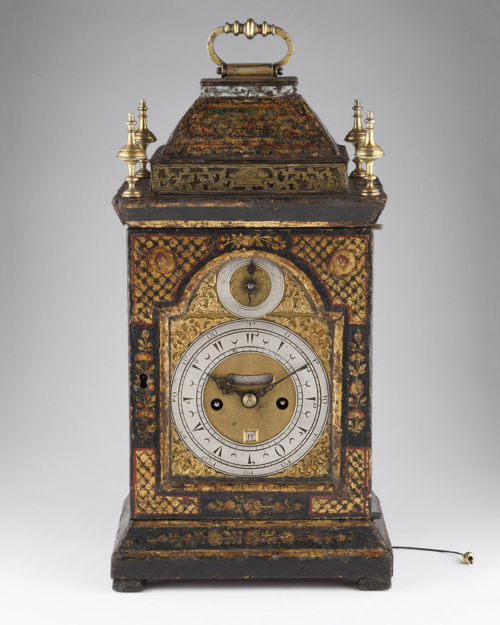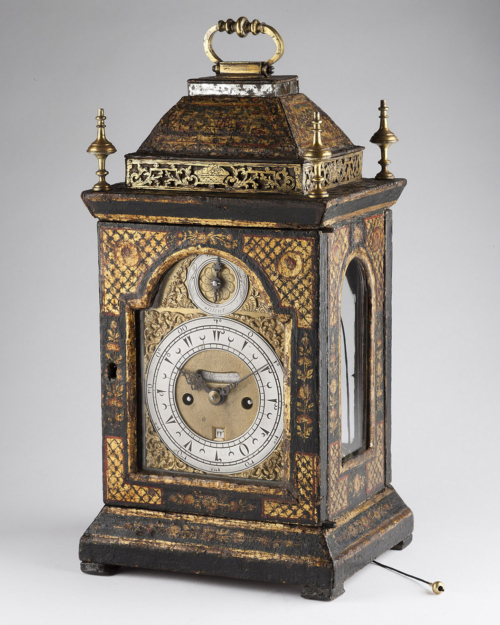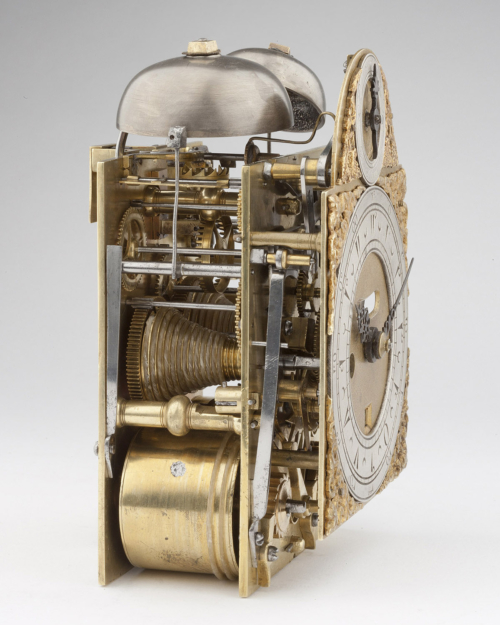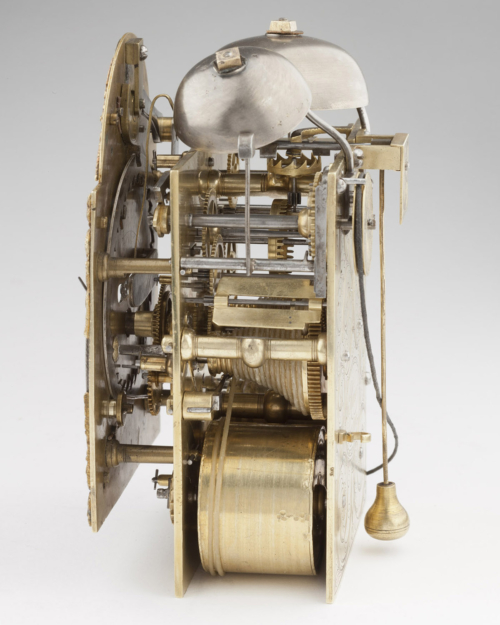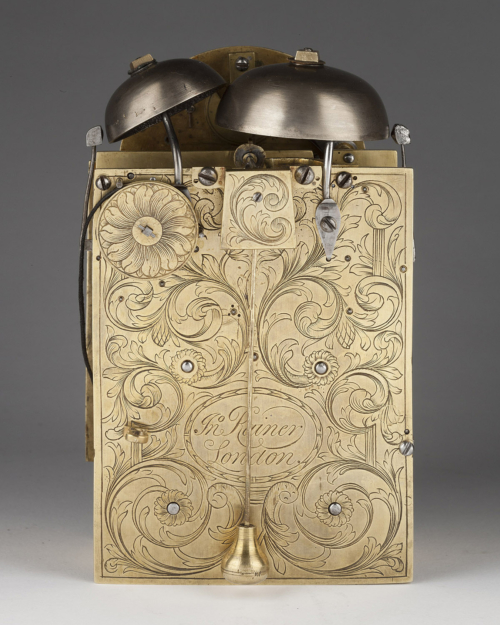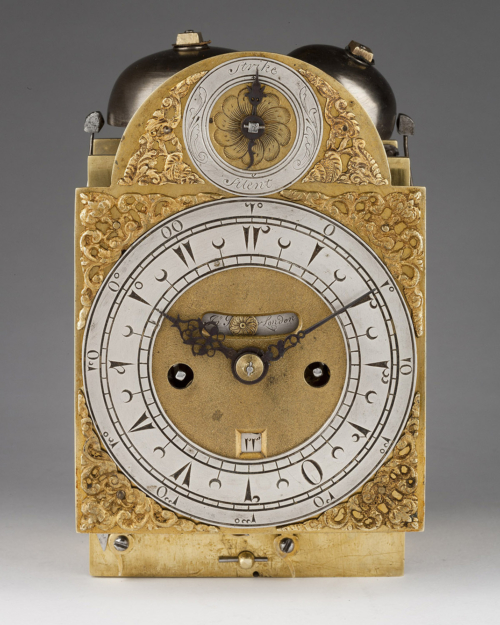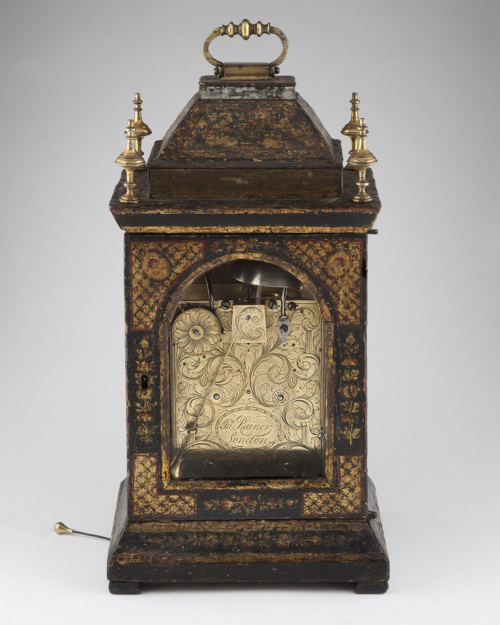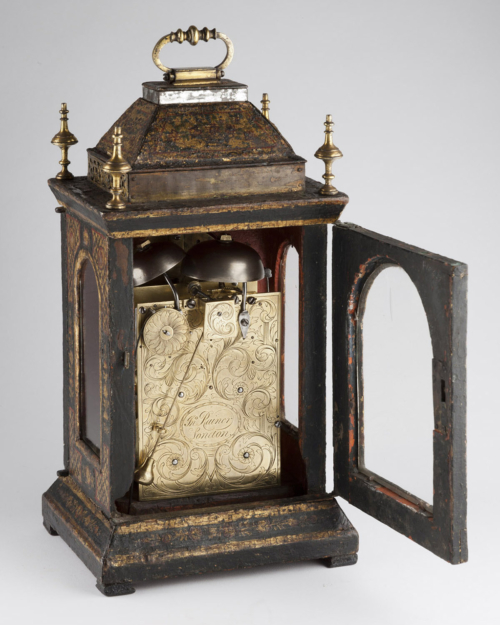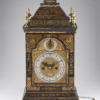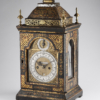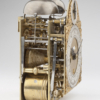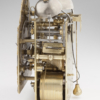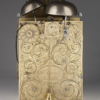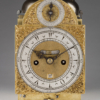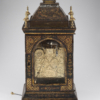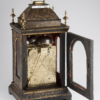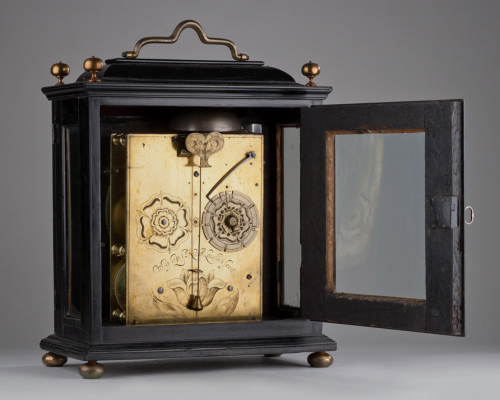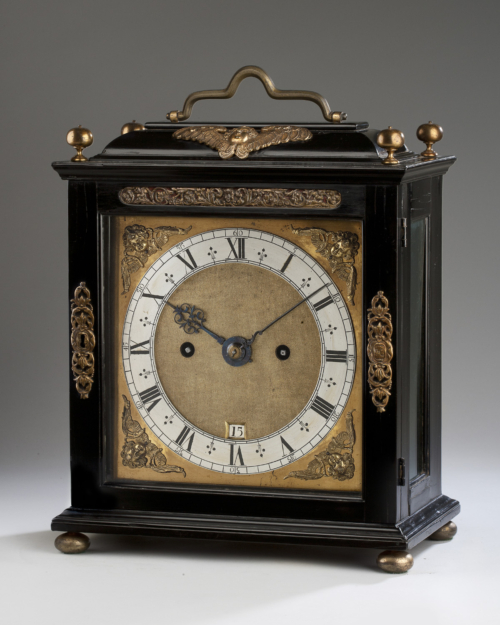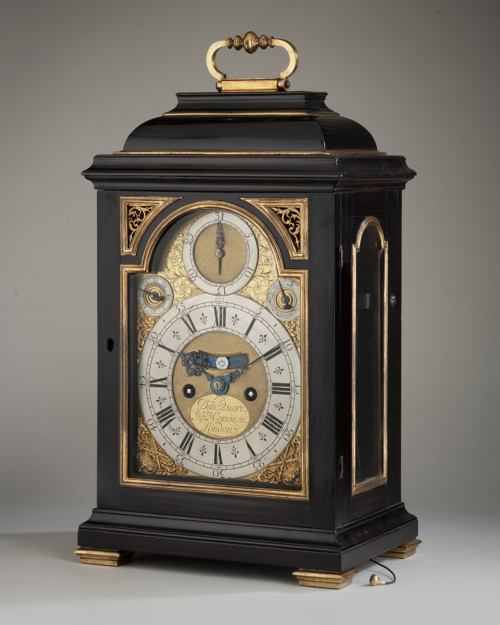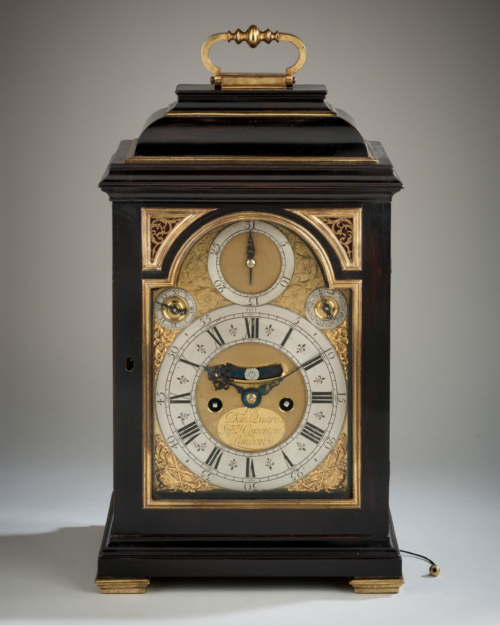| Height | 14¾ inches |
| Case | The pyramidal dome with mirrored section above a small brass knopped handle, a gallery below with gilt-brass pierced and engraved frets, flanked by four turned finials. The doors with break arch apertures, the sides arched and glazed. The base with angled apron standing on four small moulded block feet. All decorated with the original black and gold ground painted with gilt cross-hatched panels with crimson edging with sprays of flowers and foliage on the small areas of black ground between. The interior is washed with a red ground. |
| Dial | 4 by 5½ inch breakarch dial with silvered Turkish chapter ring flanked by foliate spandrels, the arch with Strike/Silent subsidiary with matching spandrels. The matted centre with a calendar square with Turkish date ring and mock pendulum aperture signed on the backing plate Jn. Rainer, London. |
| Movement | The twin fusee movement with five baluster and ringed pillars with verge escapement and bob pendulum. The rack hour strike on a large bell with the pull quarters repeating on a smaller bell via an engraved pulley. The backplate is signed to the centre Jn. Rainer, London within a wheatear oval engraved with scrolling foliage set within a line border. |
| Duration | 8 days |
| Provenance | Private collection Europe |
| Comparative Literature | Dr Ian White English Clocks for the Eastern Markets AHS 2012 |
John Rainer, London Circa 1720
A rare and delightful George I and Sultan Ahmet III small black and gold lacquered striking and pull quarter repeating table clock made for the Ottoman market.
Sorry Sold
JOHN RAINER (RAYNER)
Born circa 1673, John Rainer was apprenticed in March 1687/88 and freed in December 1697. He took four apprentices between 1697 and 1711 and Baillie records him as working until 1727.
Product Description
JOHN RAINER (RAYNER)
Born circa 1673, John Rainer was apprenticed in March 1687/88 and freed in December 1697. He took four apprentices between 1697 and 1711 and Baillie records him as working until 1727.
Additional information
| Dimensions | 5827373 cm |
|---|

